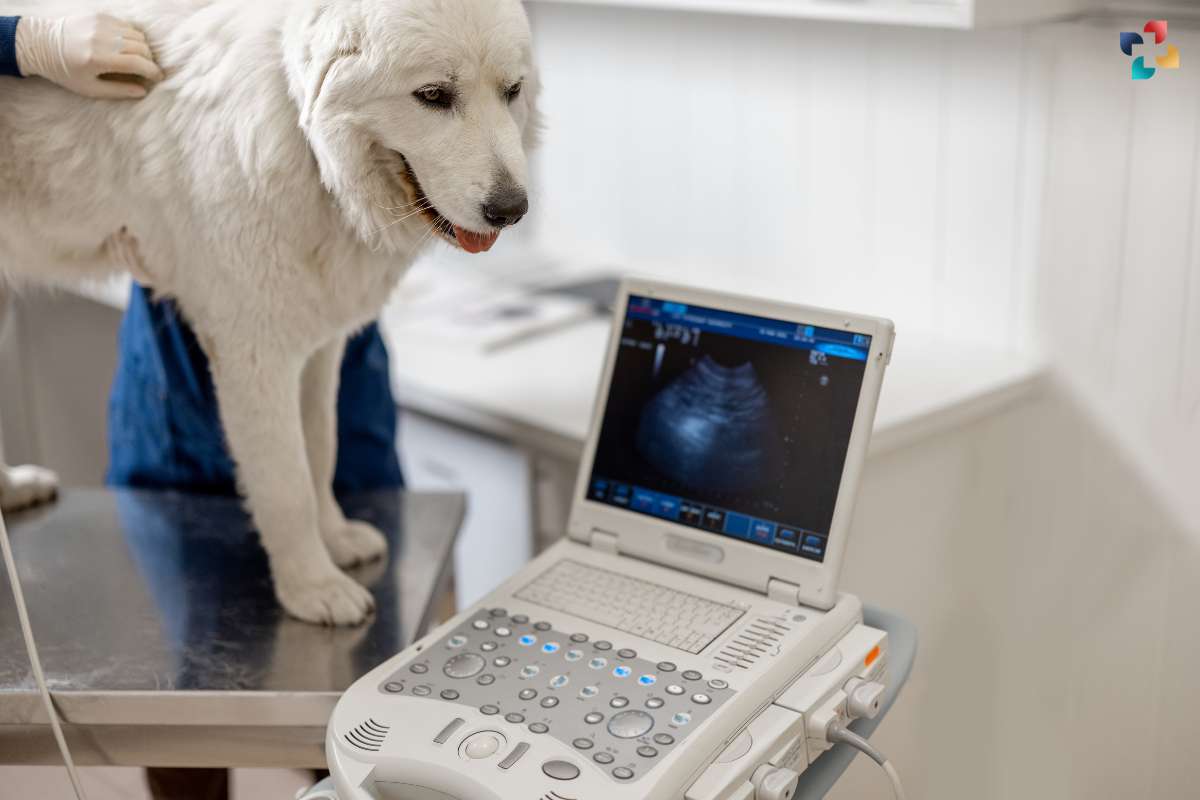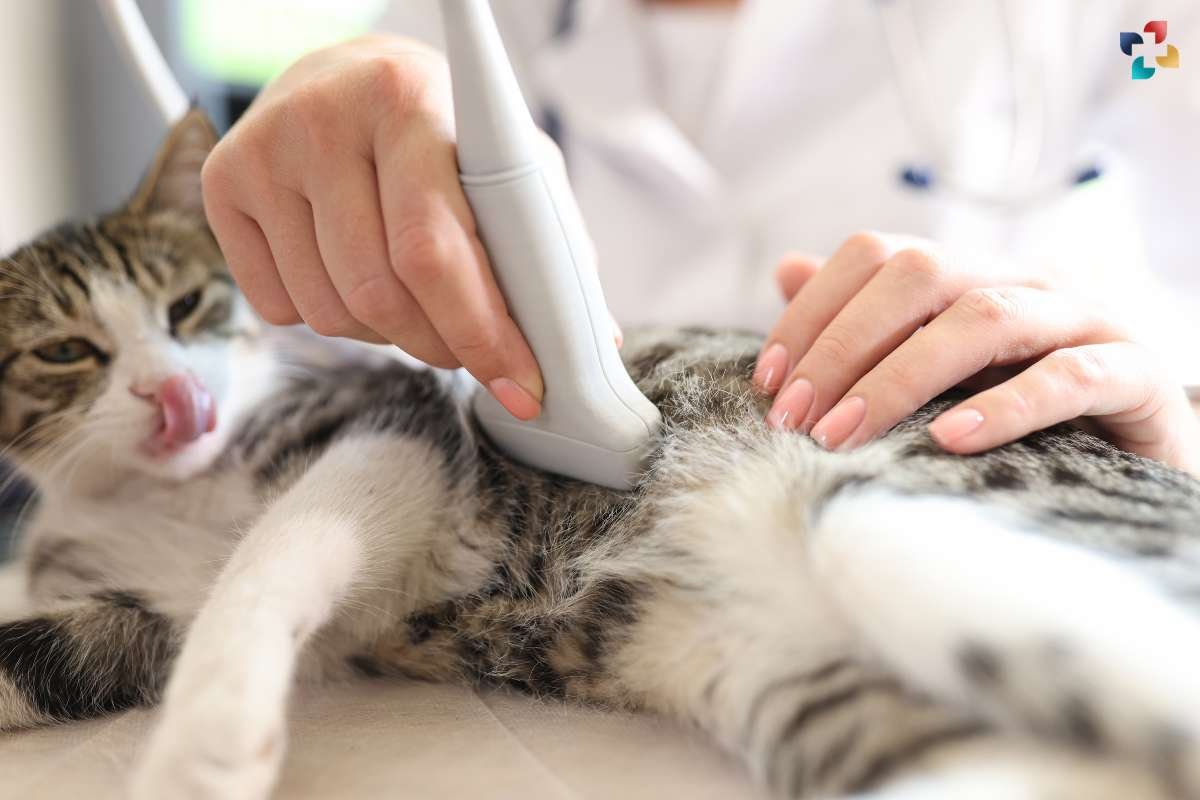In the world of animal healthcare, veterinary ultrasound has become a vital diagnostic technique that helps veterinarians see structures and make non-invasive health assessments. This imaging technology produces real-time images of the body’s organs, tissues, and blood flow by using sound waves. Sonography is an essential tool for bettering the diagnosis and treatment of a wide range of animal medical issues, from identifying tumors in bigger species to identifying pregnancy in smaller animals.
Understanding the Basics of Veterinary Ultrasound:
Veterinary ultrasound is a non-invasive imaging technique that offers several advantages over traditional diagnostic methods. It allows veterinarians to visualize soft tissues, organs, and fluid-filled structures in real time, providing valuable insights into the health and condition of animals. Additionally, ultrasound is safe, painless, and does not involve exposure to ionizing radiation, making it particularly suitable for use in pregnant animals or those with sensitive medical conditions.
Furthermore, sonography is highly versatile and can be used to assess a wide range of conditions, including pregnancy monitoring, abdominal and thoracic imaging, cardiac evaluation, musculoskeletal assessments, and guided procedures such as biopsies or fluid aspiration. Its portability and ease of use make it an invaluable tool for veterinarians working in various settings, including clinics, hospitals, and mobile veterinary practices.
With its ability to provide detailed anatomical information quickly and efficiently, sonography plays a crucial role in the diagnosis, treatment, and management of veterinary patients across species. From routine health screenings to emergency evaluations, veterinary ultrasound offers veterinarians a powerful diagnostic tool to deliver optimal care to their animal patients.
Applications of Veterinary Ultrasound:

Veterinary ultrasound finds widespread applications across various aspects of animal healthcare, offering invaluable insights into the health and well-being of animals. From routine wellness examinations to specialized diagnostic procedures, sonography plays a pivotal role in veterinary medicine.
In veterinary practice, ultrasound is commonly used for imaging internal organs such as the liver, kidneys, spleen, and bladder, allowing veterinarians to assess their size, shape, texture, and function. It is also utilized for evaluating the reproductive organs of both male and female animals, aiding in the detection of pregnancy, monitoring fetal development, and diagnosing reproductive disorders.
Furthermore, sonography is indispensable in assessing musculoskeletal injuries and abnormalities, guiding interventions such as joint injections or tendon treatments. Its use extends to the evaluation of soft tissue masses, fluid collections, and vascular structures, enabling veterinarians to diagnose conditions ranging from tumors and cysts to abscesses and fluid accumulations.
Veterinary ultrasound is utilized across a wide range of medical specialties in veterinary medicine. Some common applications include:
1. Pregnancy Diagnosis:

Sonography is commonly used to confirm pregnancy in small and large animals by visualizing the developing fetus(es) within the uterus.
2. Abdominal Imaging:
It allows veterinarians to assess the health of abdominal organs such as the liver, kidneys, spleen, and gastrointestinal tract.
3. Cardiac Evaluation:
Veterinary ultrasound can evaluate the structure and function of the heart, helping diagnose cardiac conditions such as cardiomyopathy and valvular diseases.
4. Musculoskeletal Assessment:
It aids in the evaluation of musculoskeletal injuries, such as tendon and ligament tears, and the assessment of joint health.
5. Tumor Detection:
Sonography can detect and characterize tumors and masses within the body, guiding veterinarians in diagnosis and treatment planning.
Benefits of Veterinary Ultrasound:
Veterinary ultrasound offers several advantages over traditional diagnostic imaging modalities such as X-rays and CT scans. Some key benefits include:
1. Non-Invasiveness:
Unlike invasive procedures such as surgery, sonography is non-invasive and does not require anesthesia, making it safer for animals.
2. Real-Time Imaging:
Ultrasound provides real-time images, allowing veterinarians to visualize dynamic processes such as blood flow and fetal movement.
3. Versatility:
Veterinary ultrasound can be used in various settings, including clinics, mobile veterinary practices, and on-farm visits.
4. Cost-Effectiveness:
Compared to other imaging techniques, ultrasound is often more cost-effective, making it accessible to a wider range of veterinary practices.
5. Safety:

Ultrasound does not involve ionizing radiation, reducing the risk of radiation exposure to both animals and veterinary staff.
FAQs about Veterinary Ultrasound:
1. What types of animals can undergo veterinary ultrasound?
Veterinary ultrasound can be performed on a wide range of animals, including dogs, cats, horses, cows, pigs, sheep, and exotic species.
2. Is veterinary ultrasound safe for pregnant animals?
Yes, veterinary ultrasound is considered safe for pregnant animals and is commonly used to monitor fetal development and assess pregnancy viability.
3. How is veterinary ultrasound different from human ultrasound?
While the basic principles of ultrasound imaging are similar, sonography may require specialized equipment and techniques tailored to the anatomy and size of different animal species.
4. Can veterinary ultrasound detect all types of medical conditions in animals?
While sonography is a valuable diagnostic tool, it may not be able to detect certain conditions or provide definitive diagnoses in all cases. Additional diagnostic tests may be needed for comprehensive evaluation.
5. Is specialized training required to perform veterinary ultrasound?
Yes, sonography requires specialized training and expertise to obtain accurate images and interpret the findings correctly. Many veterinarians undergo additional certification or training programs in veterinary ultrasonography to enhance their skills in this field.
Conclusion:
Veterinarians can now diagnose and treat a wide range of animal medical issues with the use of veterinary ultrasound, which is revolutionizing the field of animal healthcare. Sonography is a highly valuable tool in veterinary practices across the globe due to its non-invasive nature, real-time imaging capabilities, and adaptability. It helps to improve patient care and achieve better results for animals of various shapes and sizes.











